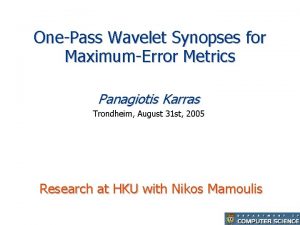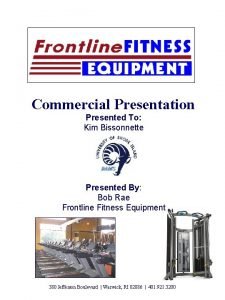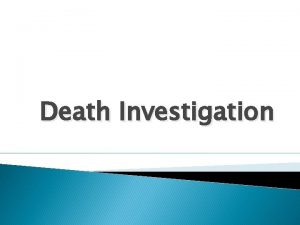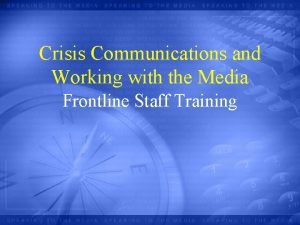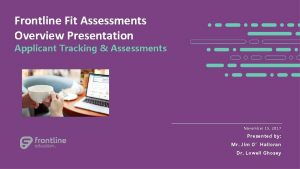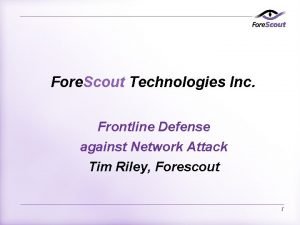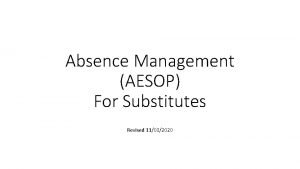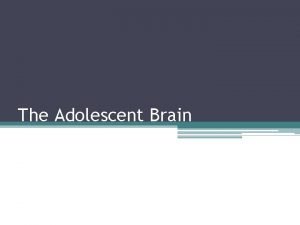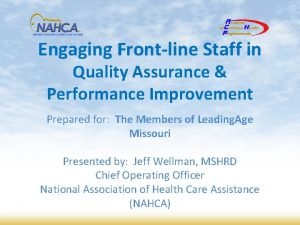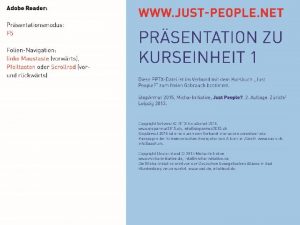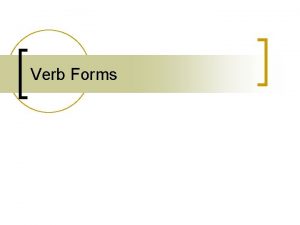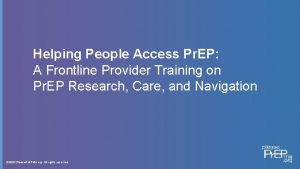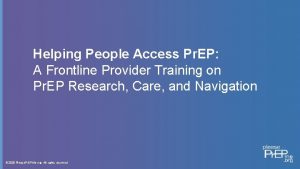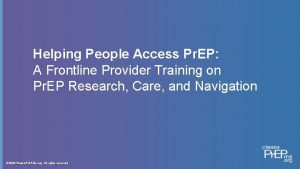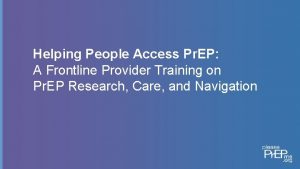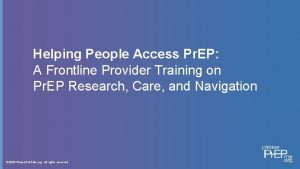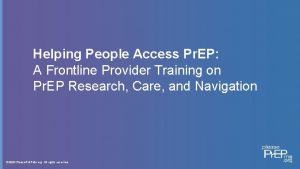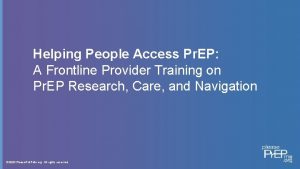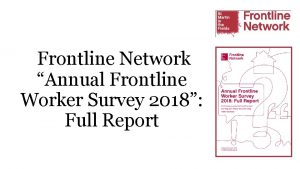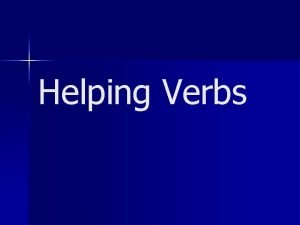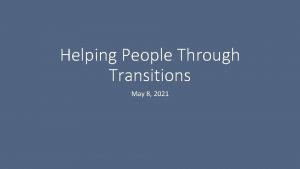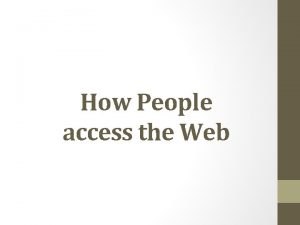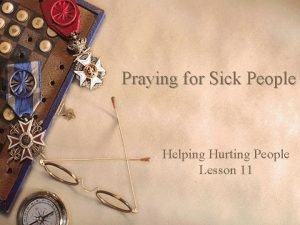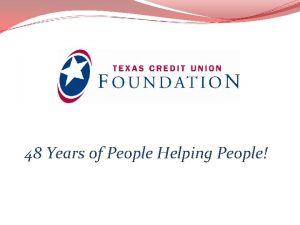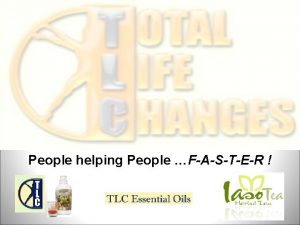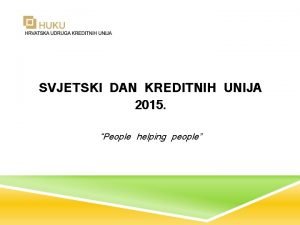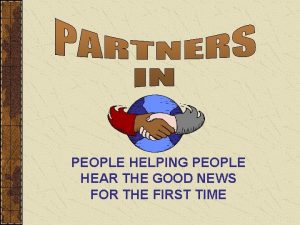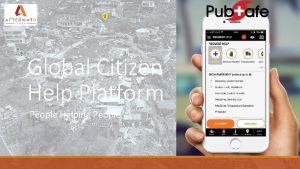Helping People Access Pr EP A Frontline Provider


























- Slides: 26

Helping People Access Pr. EP: A Frontline Provider Training on Pr. EP Research, Care, and Navigation © 2019 Please. Pr. EPMe. org. All rights reserved.

Helping People Access Pr. EP: A Frontline Provider Training on Pr. EP Research, Care, and Navigation • • Module 1: Introduction to Pr. EP Module 2: Pr. EP Science Module 3: Client-Centered Navigation Practices Module 4: Initial Assessments: Getting to Know Your Clients © 2019 Please. Pr. EPMe. org. All rights reserved. • • Module 5: Linkage to Pr. EP Care Module 6: Paying for Pr. EP Module 7: Starting Pr. EP, Adherence, and Ongoing Pr. EP Care Module 8: Self Care and Healthy Teams Series module titles

Alan Mc. Cord Please. Pr. EPMe © 2019 Please. Pr. EPMe. org. All rights reserved.

Helping People Access Pr. EP: A Frontline Provider Training on Pr. EP Research, Care, and Navigation Module 6: Paying for Pr. EP © 2019 Please. Pr. EPMe. org. All rights reserved.

MODULE 6: PAYING FOR Pr. EP Topics and Themes • • Insurance and health care terms Federal poverty level Assessing insurance status Finding health insurance Covering out-of-pocket costs Patient assistance programs Pharmacy plans GUEST PRESENTER: April Saravia Pr. EP Navigator Men’s Health Foundation © 2019 Please. Pr. EPMe. org. All rights reserved.

MODULE 6: PAYING FOR Pr. EP Insurance and Health Care Terms • Co-insurance: percentage of medical service cost that a patient pays after deductible is met (usually ranges 10– 40%) • Co-pay: fixed amount that a person pays for a medical service, such as a medical visit • Deductible: total amount the individual is responsible for before full insurance benefits kick in • HMO (health maintenance organization), PPO (preferred provider organization), EPO (exclusive provider organization): different types of provider networks with varying benefits for innetwork and out-of-network services and varying restrictions about which doctor the beneficiary can see © 2019 Please. Pr. EPMe. org. All rights reserved. • Open enrollment: period when a person can purchase or switch health insurance plans • Qualifying life events: a life-changing event that allows a person to get/change health plans (e. g. , birth of a child, losing a job) • Summary of benefits: list of insurance plan benefits; useful for comparing between plans • Federal poverty level (FPL): used to determine eligibility for federal and state health programs and patient assistance programs

MODULE 6: PAYING FOR Pr. EP Federal Poverty Level (FPL) The Federal Poverty Level (FPL) is used to determine eligibility for health care and patient assistance programs. • Adjusted in January/February each year (tinyurl. com/Annual. FPL). • FPL is used to determine eligibility for various programs. • “Baseline” FPL (100%) is based on a single-person household and increases with each additional member. • For 2019, baseline FPL is $12, 490 (slightly different for Alaska, Hawai’i). © 2019 Please. Pr. EPMe. org. All rights reserved. • Programs state what FPL level meets eligibility requirements. Here are some sample FPL thresholds: - 100% FPL: $12, 490 - 100% FPL: $12, 140 (Covered CA plans, which uses previous year’s FPL) - 138% FPL: $17, 236 (many state Medicaids) - 500% FPL: $62, 450 (some assistance programs) • Other FPLs are possible and can vary from state to state, such as services for pregnant people, children, or qualified disability.

MODULE 6: PAYING FOR Pr. EP Assessing Insurance Status Once a client is deemed medically eligible for Pr. EP, the next step is to assess how to cover their medication and medical care costs. It may be simplest to assess a client’s current insurance status within these categories: • Uninsured, but eligible for insurance/health care (commercial, employer, Medicare, Medicaid, VA, Indian Health Service) • Uninsured, but not eligible for insurance (outside of open enrollment period, undocumented, etc. ) • Insured through commercial, employer, or government health plan • Insured, but with an extremely limiting plan (high deductible, limited pharmacy benefits, etc. ) © 2019 Please. Pr. EPMe. org. All rights reserved.

MODULE 6: PAYING FOR Pr. EP Assessing Insurance Status: Out-of-Pocket Costs Clients may be able to cover some or all of their out-ofpocket costs through: • Comparing insurance plans through state marketplaces, insurance brokers, or online research • Enrolling in various patient assistance programs • Enrolling in state Pr. EP assistance programs, such as those in these states: CA, CO, DC, FL, IL, MA, OH, NY, VA, and WA © 2019 Please. Pr. EPMe. org. All rights reserved.

MODULE 6: PAYING FOR Pr. EP Assessing Insurance Status: Further Questions For uninsured individuals, some questions to ask are: • What is their annual income? • What is their citizenship status? • What can they afford in terms of out-of-pocket costs? For insured individuals, some questions to ask are: • Is Truvada on the plan’s formulary? • What tier is Truvada on the formulary? • What is the deductible amount? • What services apply towards the deductible? © 2019 Please. Pr. EPMe. org. All rights reserved. • What is the out-of-pocket maximum? • What is the co-pay or co-insurance amount for medical visits, blood work, prescriptions? • How do these costs differ if referred outside of plan (seeing a specialist, etc. ) • What are they able to pay now or continue to pay? • How much can they pay up front to pick up the prescription? • Check the front of insurance cards or enrollment materials for relevant information.

MODULE 6: PAYING FOR Pr. EP Finding Health Insurance: Commercial Insurance The following questions and information may help you explore and compare options. Commercial insurance: • Is your client currently covered by a commercial plan? • If your client is employed, are employer plans available/affordable? • When is the enrollment period? What qualifying life events may help? Is there a waiting period to enroll? • Does their employer offer an FSA or HSA (pre-tax dollars) for health expenses? • Have they recently left employment? Can they get/afford COBRA? © 2019 Please. Pr. EPMe. org. All rights reserved.

MODULE 6: PAYING FOR Pr. EP Finding Health Insurance: Medicare: • Must legally reside in the U. S. • Open enrollment is ongoing, as long as the disability or age requirement is met • Can access if 65 years of age or older, or if meets disability requirements • Can access if on SSDI for 24 months or has Lou Gehrig’s Disease • Must pay monthly premiums • Four parts to coverage: Part A: hospital care; Part B: medical care; Part C: supplemental coverage; and Part D: medications • Medicare drug coverage has a gap, called a “donut hole, ” where there is initial coverage (Medicare pays), then a loss of coverage (patient pays a discounted amount), and then coverage resumes based upon the plan (Medicare pays again) • Apply at www. ssa. gov/medicare © 2019 Please. Pr. EPMe. org. All rights reserved.

MODULE 6: PAYING FOR Pr. EP Finding Health Insurance: Other Sources Other considerations: • Is your client eligible for Medicaid? • Is your state a Medicaid-expanded state? • Can Pr. EP be covered under Medicaid? • Is your client eligible for VA, Tricare, or other military care? • Is your client eligible for care under the Indian Health Service? © 2019 Please. Pr. EPMe. org. All rights reserved.

MODULE 6: PAYING FOR Pr. EP Patient Assistance Programs Some Pr. EP costs may not be covered by insurance. However, there may be other ways to help cover some of those costs. • These costs include: prescriptions, medical visit co-pays, co-insurance, lab co-pays, travel expenses, etc. • Highlight and discuss these costs before a client starts Pr. EP. • Provide referrals to low-cost or free clinics if warranted. • Other sources of financial support include: - State Pr. EP assistance programs - Advancing Access (gileadadvancingaccess. com) - PAF (Patient Advocate Foundation, copays. org) - PAN (Patient Access Network Foundation, panapply. org) - Good Days (mygooddays. org) © 2019 Please. Pr. EPMe. org. All rights reserved.

MODULE 6: PAYING FOR Pr. EP State Pr. EP Assistance Programs • Pr. EP assistance programs are available in some states • In most cases, they are the payer of last resort, meaning other programs should be considered first • These programs have varying eligibility requirements and ways to enroll • Only four of the ten offer assistance with both co-pay and medication coverage © 2019 Please. Pr. EPMe. org. All rights reserved.

MODULE 6: PAYING FOR Pr. EP What Patient Assistance Programs Cover © 2019 Please. Pr. EPMe. org. All rights reserved.

MODULE 6: PAYING FOR Pr. EP Gilead Advancing Access: Patient Support Program • Advancing Access helps people who are uninsured, underinsured (including those without brand-name drug coverage), or who need financial assistance to pay for their prescription. • The Patient Support Program provides free, temporary access to Truvada for eligible individuals - Uninsured individuals who make at or below 500% FPL - Other individuals without pharmacy benefits • You or your client can apply by phone, fax, or online • Usually takes 2– 5 days for approval • After approval, call Gilead to obtain member ID, BIN and Rx Group numbers for pharmacy payments © 2019 Please. Pr. EPMe. org. All rights reserved.

MODULE 6: PAYING FOR Pr. EP Gilead Advancing Access: Co-pay Coupon Card Program • This program covers up to $7, 200 annually for prescription co-pays • A co-pay card is used at pharmacies (mail order or in person). If your client has other costs afterwards, apply to either PAN, PAF or Good Days • Assists commercially insured individuals • Assists individuals with Medicare without prescription coverage • Will not assist people with government health care • No income limit; no lifetime limit • Cards are valid for 12 monthly refills; reloads each January; funds do not roll over • Apply by phone or online • If applying by phone, usually takes 1– 3 days for approval • If applying online, clients will instantly receive a printable card for the pharmacy © 2019 Please. Pr. EPMe. org. All rights reserved.

MODULE 6: PAYING FOR Pr. EP Patient Access Network (PAN) Foundation This charitable program can help with prescription co-pay costs. • Must have Medicare • Must be U. S. resident • Income limit: 500% FPL • Up to $8, 000 possible to cover prescription co-pays • Apply: panapply. org • Take a screen shot or print a copy of PAN card (Rx BIN, GRP and PCN included on the card) for client’s file • Most pharmacies accept PAN cards directly PAN sometimes closes their program due to funding shortfalls. © 2019 Please. Pr. EPMe. org. All rights reserved.

MODULE 6: PAYING FOR Pr. EP Patient Advocate Foundation (PAF) This charitable program provides financial relief for people who need help with covering the cost of their prescription co-pays. • Must be U. S. resident with a SSN • Must have insurance (includes Medicare) • Income limit: 400% FPL, adjusted with COLI • Up to $7, 500 possible to cover prescription co-pays • The co-pay card is good for 12 months • Apply: copays. org • A pharmacy claim must be made on funds within the first 30 days of the award • Use PAF card first before going to the Gilead co-pay card. © 2019 Please. Pr. EPMe. org. All rights reserved.

MODULE 6: PAYING FOR Pr. EP Good Days is a charitable program that provides financial relief for people who are underinsured (not uninsured) and need help with covering their prescription co-pay costs. • Must be U. S. resident with a SSN • Must have insurance (Medicare, Tricare, VA only) • Income limit: 500% FPL • Up to $7, 500 possible to cover prescription co-pays • Start application process before paying first covered Pr. EP costs • Apply: mygooddays. org, 877 -968 -7233 © 2019 Please. Pr. EPMe. org. All rights reserved.

MODULE 6: PAYING FOR Pr. EP Pharmacy Plans • Using in-network pharmacies is usually cheaper. • Some insurance plans have limited prescription coverage. • Plans must offer both in-person pharmacy pick-up and mail order delivery, although copays may be different amounts. • It may help to inform the insurance company if there are privacy or safety concerns. • Some plans offer only 30 -day refills, others 90 days. Some offer earlier or automatic refills. • Plan ahead in case there are problems with refills. • Apply for and receive Gilead’s co-pay card before going to the pharmacy. • If a pharmacy doesn’t accept Gilead’s co-pay card, keep all receipts and submit them to the source on the back of the card for reimbursement. • If your client pays using their FSA/HSA, they cannot get that reimbursed through the co-pay card. © 2019 Please. Pr. EPMe. org. All rights reserved.

MODULE 6: PAYING FOR Pr. EP GUEST PRESENTER April Saravia Pr. EP Navigator Men’s Health Foundation she/hers © 2019 Please. Pr. EPMe. org. All rights reserved.

MODULE 6: PAYING FOR Pr. EP April Saravia Men’s Health Foundation © 2019 Please. Pr. EPMe. org. All rights reserved.

Thank you for your time! For further reading and tools, download the resource guide accompanying this module. Please complete the post-session survey. Thanks! This module was produced in partnership with San Francisco AIDS Foundation. www. sfaf. org © 2019 Please. Pr. EPMe. org. All rights reserved.

Acknowledgments and Permissions Please. Pr. EPMe is grateful to the National Library of Medicine and the National Coalition of STD Directors for funding the development and production of this course. Updates and permissions: • All efforts have been made to provide current data and information. Training modules will be updated as Pr. EP research, access, and clinical guidelines evolve. • It is intended that these modules and individual slides be used as prepared, without changes in either content or attribution. We ask users to honor this intent. • The complete slide set is available for download at www. pleaseprepme. org/prepnavtraining. © 2019 Please. Pr. EPMe. org. All rights reserved.
 Maybe mr do should have a will
Maybe mr do should have a will Provider digital access
Provider digital access Frontline ownership
Frontline ownership Frontline
Frontline Frontline excellence
Frontline excellence Frontline fitness ri
Frontline fitness ri Body decomposition
Body decomposition Frontline media
Frontline media Teacher applicant tracking
Teacher applicant tracking Fore scout
Fore scout Aesops substitute
Aesops substitute Frontline professional development
Frontline professional development Frontline energy login
Frontline energy login Pbs frontline inside the teenage brain
Pbs frontline inside the teenage brain Supervisor safety leadership training
Supervisor safety leadership training Schoology login puyallup
Schoology login puyallup Frontline quality assurance
Frontline quality assurance Terminal access controller access-control system
Terminal access controller access-control system Terminal access controller access control system plus
Terminal access controller access control system plus Types of people as media
Types of people as media Justpeople
Justpeople Black eyed peas where is the love lyrics
Black eyed peas where is the love lyrics Transformed people transform people
Transformed people transform people Helping verb quiz
Helping verb quiz Example of past form of the verb
Example of past form of the verb Learning target
Learning target Parents a critical role in helping
Parents a critical role in helping



